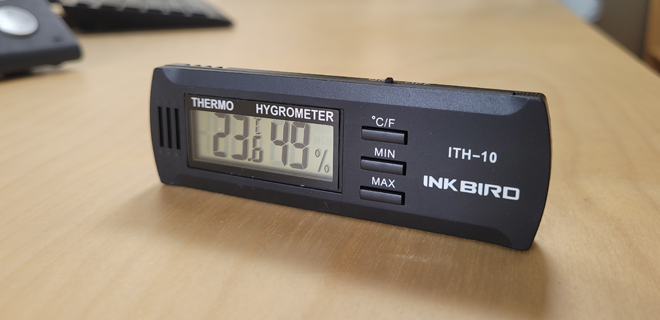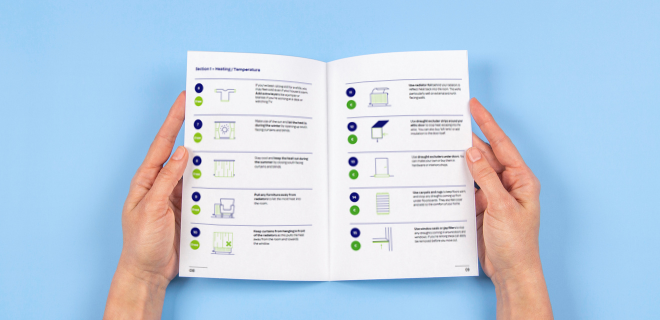Temperature and Humidity Meter
The comfort level of your home depends a lot on whether it’s warm and dry or cold and damp. By checking each room’s temperature and humidity (the amount of water vapour in the air), you’ll know if you need to adjust your heating or ventilation — or both.
Use the temperature and humidity meter in different parts of each room, at different times, to check if they’re too hot or cold, or too dry or damp. Fresh air is essential for a healthy home, so the key is to ensure you have enough ventilation to let damp, stale air out, while still keeping as much heat in as possible.
How to use the temperature and humidity meter

To check the levels in your home, simply turn the temperature and humidity meter on and place it on any stable surface, as long as it’s not heated. Tables, windowsills and bookshelves would all be good places to test. For rooms you spend time in, like your kitchen or living room, the ideal temperature range is between 18 degrees and 20 degrees. The ideal levels for humidity are between 40% and 60%.
For full instructions on this and other tools in the Home Energy Saving Kit, see our Manual and Workbook.
Top tips for managing humidity

If you find humidity is an issue, there may be ways you can manage it, such as improving ventilation.
To find out more, see pages 12 – 14 of our guide to 100 Ways to Save Energy at Home.
VIDEO TUTORIAL
Follow this step by step tutorial to check for any cold or damp areas in your home.
You may also like:
What's in the kit?
Five tools to help you measure where energy is used in your home.
Video Tutorials
Step by step guides for each of the tools in the Home Energy Saving Kit.
Manual and Workbook
Learn how best to use each of the tools in the kit.